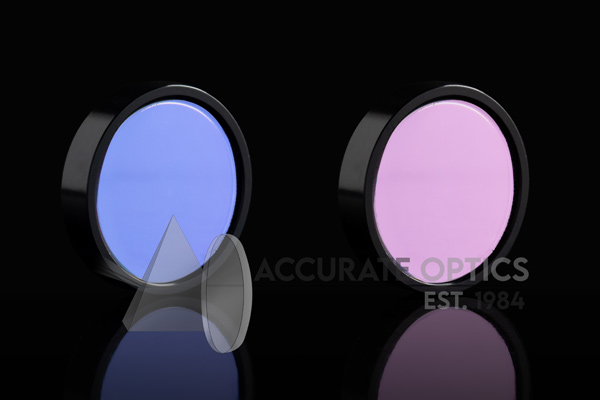Dichroic mirrors, also known as thin-film interference filters or beam splitters, are crucial components in various optical systems. These specialized mirrors selectively reflect specific wavelengths of light while transmitting others, making them invaluable in applications ranging from microscopy to laser technology. Understanding the different types of
dichroic mirrors and their unique characteristics can help in choosing the most suitable option for specific optical setups. Let’s delve into the various dichroic mirror types, their applications, and advantages.
Bandpass Dichroic Mirrors:
Bandpass dichroic mirrors are designed to reflect light within a specific range of wavelengths while transmitting light outside this range. They are commonly used in fluorescence microscopy and spectroscopy applications where precise wavelength selection is critical. By reflecting the excitation wavelength towards the sample while allowing the emitted fluorescence to pass through, bandpass dichroic mirrors enable the visualization and analysis of fluorescently labeled specimens.
Advantages:
– High Selectivity: Bandpass dichroic mirrors offer high selectivity in reflecting specific wavelengths, ensuring minimal interference from unwanted spectral components.
– Enhanced Signal-to-Noise Ratio: By effectively blocking out unwanted wavelengths, bandpass dichroic mirrors improve the signal-to-noise ratio in fluorescence imaging and spectroscopy experiments.
– Optimized Performance: These mirrors are designed with precise coating specifications to achieve optimal performance within the desired wavelength range, ensuring accurate and reliable results.
Longpass Dichroic Mirrors:
Longpass dichroic mirrors transmit light above a certain cutoff wavelength while reflecting shorter wavelengths. They are commonly used in fluorescence microscopy and imaging systems to separate excitation light from emitted fluorescence. By transmitting the longer wavelength fluorescence signals while reflecting the shorter wavelength excitation light, longpass dichroic mirrors facilitate clear and contrasted imaging of fluorescent samples.
Advantages:
– Efficient Separation: Longpass dichroic mirrors efficiently separate excitation and emission wavelengths, minimizing crosstalk and spectral bleed-through in fluorescence imaging applications.
– Increased Sensitivity: By eliminating interference from excitation light, longpass dichroic mirrors enhance the sensitivity and specificity of fluorescence detection, enabling accurate analysis of fluorescent signals.
– Versatile Design: These mirrors are available in various cutoff wavelength options, allowing flexibility in choosing the most suitable mirror for specific fluorescence imaging setups.
Shortpass Dichroic Mirrors:
Shortpass dichroic mirrors transmit light below a certain cutoff wavelength while reflecting longer wavelengths. They are commonly used in fluorescence microscopy and imaging systems to separate emitted fluorescence from excitation light. By transmitting the shorter wavelength fluorescence signals while reflecting the longer wavelength excitation light, shortpass dichroic mirrors enable the visualization and analysis of fluorescent samples with high contrast and clarity.
Advantages:
– Effective Separation: Shortpass dichroic mirrors effectively separate emission and excitation wavelengths, minimizing background noise and enhancing the contrast of fluorescent signals.
– Improved Signal-to-Noise Ratio: By blocking out excitation light, shortpass dichroic mirrors improve the signal-to-noise ratio in fluorescence imaging, allowing for more accurate and reliable fluorescence detection.
– Customizable Options: These mirrors are available with different cutoff wavelength specifications, offering flexibility in tailoring the spectral characteristics to specific fluorescence microscopy applications.
Conclusion:
Dichroic mirrors are indispensable tools in optical systems requiring precise wavelength manipulation and separation. By understanding the different types of dichroic mirrors available, along with their applications and advantages, researchers and engineers can make informed decisions when selecting the most suitable mirror for their specific optical setups. Whether it’s bandpass, longpass, or shortpass dichroic mirrors, each type offers unique capabilities that contribute to the advancement of various fields such as microscopy, spectroscopy, and fluorescence imaging.








